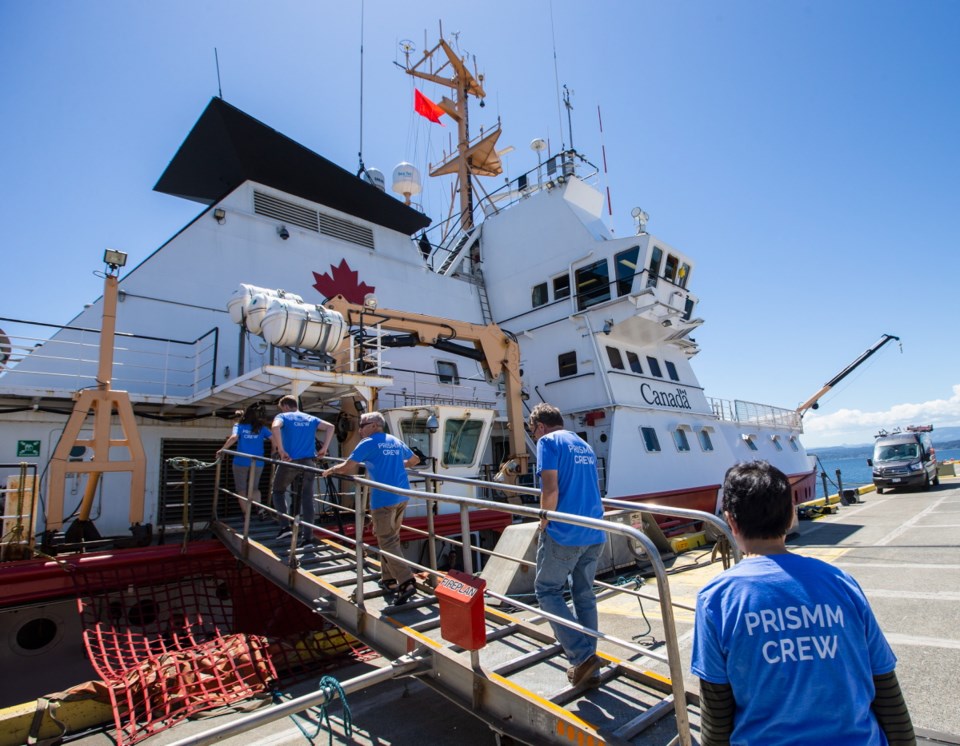A team of scientists will spend the next 10 weeks surveying the marine mammal population in B.C. waters, the largest study of its kind in the Pacific Ocean.
Minister of National Defence Harjit Sajjan was at the Institute of Ocean Sciences in Sidney on Tuesday to announce the research expedition, made possible by $1.3 million in federal funding.
Two dozen biologists aboard a pair of Canadian Coast Guard vessels will use underwater microphones to determine the number of blue whales, North Pacific right whales, fin whales, humpbacks, grey whales, killer whales, harbour porpoises, and loggerhead and leatherback sea turtles in Pacific waters, Sajjan said.
Researchers will also survey at-risk species including Dall’s porpoises, white-sided dolphins, sperm whales and several species of beaked whales.
Knowing the distribution, abundance and habitat characteristics of these mammals will help scientists better protect species at risk, said Linda Nichol, senior research biologist for the Department of Fisheries and Oceans.
Biologists aboard Canadian Coast Guard ship John P. Tully will survey mammals off the west coast of Vancouver Island and west of Haida Gwaii, Nichol said.
Another coast guard vessel, Tanu, will collect data in Hecate Strait, Johnstone Strait, Strait of Georgia and into Juan de Fuca Strait.
DFO has been doing similar surveys on a smaller scale every year for the past 18 years, Nichol said.
“This is the first time we’ve been able to have this type of extensive coverage to cover all B.C. waters,” she said.
In October, a team of researchers published a study in Scientific Reports that found southern resident killer whales are at risk of extinction if measures are not taken to increase their food supply of chinook salmon and reduce underwater noise caused by boats.
Misty MacDuffee, a biologist with the Sidney-based Raincoast Conservation Foundation who co-wrote the report, commends DFO for funding the survey and hopes it informs efforts to recover at-risk marine mammals.
However, the survey might not do much to help the endangered southern resident killer whale population, she said.
“We already know a lot of about the quality of the habitat, we know their distribution and we know their numbers.” She said that what the population needs is a plan dealing with threat reduction.
In June, an orca known as L92 died, bringing the total number of southern resident killer whales to 75, the lowest count since the early 1980s.
In May, the federal government announced the closure of some recreational and commercial chinook fisheries on the West Coast in an attempt boost food supply for southern resident orcas.
The foundation would like to see the federal government implement stricter rules to prevent whale-watching vessels from getting too close to southern resident killer whales in key feeding areas, MacDuffee said.
She said that the marine survey might be helpful in gathering data on other killer whales such as transient and off-shore killer whales.



